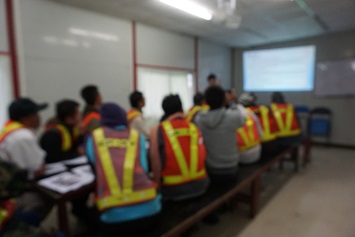When we look at the safety training our organizations deliver, we ask if we are compliant. We ask if we are going to get citations. We may even ask if the attendees liked the training. But there is one uncomfortable question that is not asked: Are we wasting everyone’s time?
The goal of safety training is to increase attendees’ knowledge so they perform safe work. If safety training is not as good as it should be, it can easily be a time-wasting activity that checks boxes but does not actually create a safer workplace.
How can we build and deliver better safety training? A good place to start is to consider four principles: We must teach the right things in the right way and with the right people and check to see if it worked.
Teach the Right Things
Long before a safety trainer opens PowerPoint® to start creating slides, he or she needs to first assess what needs to be taught. Two questions determine what information a facilitator should teach: First, what does the audience need to know? Second, what do they already know? The training should be based on the gap between those two answers. For example, the maintenance team needs to know how to lock out and tag out the newly installed compactor before performing work. They already know the company lockout/tagout (LOTO) policy, the safety principles behind LOTO, and the equipment-specific procedure for the other equipment in the facility. While it may be desirable to include a refresher on all things LOTO in this training, it may be more successful to provide training on just the newly installed compactor. Remember, more words and more information does not necessarily equal more knowledge.
In the Right Way
Next, consider the best methods for delivering the training. There are benefits and limitations for live virtual learning, online courses, and in person. Different topics lend themselves to different methods. Consider not just lectures but also small groups, breakout rooms, role-playing, brainstorming, hands-on practice, and case studies. Adults learn in different ways, and knowing the best times to use different methods will make training better.
With the Right People
Adult learners need their experience to be acknowledged and respected. In safety training, this can be used to great advantage. Consider using veterans to help develop and, yes, even deliver specific safety-related training. People with extensive experience with a process or task lend clout to the rules and can help get buy-in from newer employees. Additionally, those veterans may learn even more by teaching.
Check to See if Safety Training Worked!
Remember, safety training is done so people will learn and then change their behavior. After safety training, organizations must determine if that has happened. Knowledge can be checked by using pre- and post-tests. Behavior change can be assessed by conducting observations.
If safety training teaches the right things in the right way and with the right people and we confirm that it worked, then it has been a great use of time and improved safety.
 Camille Oakes, CSP, SMS, CIT, is the President and CEO of Better Safety with over fifteen years of experience in a multitude of industries including distribution, transportation, government, and military. As the founder of Better Safety, Camille consults with companies to employ better training, better culture and better business practices by developing their operations team into Safety Leaders. Join Camille for a free live webinar, 8 Ways to Make Your Safety Training More Successful, taking place on Wednesday, June 23, 2021, at 2:00 p.m. Eastern time. Camille Oakes, CSP, SMS, CIT, is the President and CEO of Better Safety with over fifteen years of experience in a multitude of industries including distribution, transportation, government, and military. As the founder of Better Safety, Camille consults with companies to employ better training, better culture and better business practices by developing their operations team into Safety Leaders. Join Camille for a free live webinar, 8 Ways to Make Your Safety Training More Successful, taking place on Wednesday, June 23, 2021, at 2:00 p.m. Eastern time.
In this educational session, you’ll learn how to:
|

